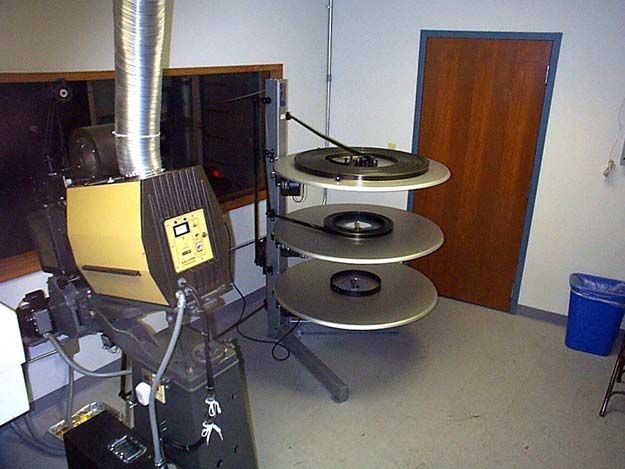|
|
 
|
|
Author
|
Topic: 16mm Projector B&H Out of Sync
|
Antonio Castles
Film Handler
Posts: 6
From: Bogota, D.E., Colombia
Registered: May 2012
|
 posted 06-07-2012 09:27 AM
posted 06-07-2012 09:27 AM




Hello,
I'm an art student from Bogotá, Colombia. Recently, I started to work with 16mm film. I have 2 B&H Projectors (1693 and 2535), and I decided to do an installation. I cut a segment of film and made it run through both projectors at the same time. Both were set at 24 fps, but after a while it was evident that the 1693 projector was running a little bit slower, and the film started to stretch progressively. What can I do about it? there are no repair services here. It is an almost unnoticeable problem, but its a big problem for my installation. How can I make sure that both projectors run at the exact same speed?
Also, I have considered to make loop projections, but I can't seem to find any projector loopers at an affordable price. Is there a free design out there? Can they be home made? Is it possible to find one design that works also with super 8?
Thank you for your time.
| IP: Logged
|
|
|
|
|
|
|
|
|
|
|
|
Randy Stankey
Film God

Posts: 6539
From: Erie, Pennsylvania
Registered: Jun 99
|
 posted 06-09-2012 10:19 PM
posted 06-09-2012 10:19 PM




Yes, you can make your own accumulator. You can make it out of parts you have on hand or buy from the hardware store.
The most important thing to watch out for is to make the film path clear of things that can damage film. Use rollers at all places where film makes contact. Make sure nothing touches or drags on the film. Ensure that the path is as straight as possible to avoid kinking the film or causing it to "jump off the track."
You could use empty spools of thread for rollers and you could use yard sticks (meter sticks) to hold things together.
Just think. You'll come up with something. Be creative.
You'll need to know which machine runs fastest and which machine runs slowest. Then you adjust your system to account for that.
Assume "Projector #1" is the one where the film starts out and "Projector #2" is the one where the film ends up.
If Projector #1 runs faster than Projector #2 then the zigzag loop of film will GROW as the presentation runs. If Projector #1 runs slower than Projector#2 then the loop will SHRINK.
Keep this in mind when you build your system.
If you have a situation where your film loop grows, set your accumulator at the top of its travel when the show starts so that it will get lower as the show goes on. If your loop shrinks, start the accumulator at the bottom when the show begins.
If I had my choice, I'd arrange things so that Projector #1 is the fast projector and Projector #2 is the slow projector. That way the loop will grow and the accumulator will get lower during the show. This way, if things don't go as planned, you will not have a disaster on your hands. If your loop grows too big, the worst thing that could happen is that you end up with film all over the floor. This is not a good thing but it's not a "show stopper."
If you do it the other way, in a "shrinking loop," you could run out of film. Your accumulator could end up going all the way to the top and there won't be any more slack. The two projectors will start a game of "Tug of War!" You could damage your film or damage your projectors but you will almost certainly stop the show. Whatever happens, nothing good will come of it.
Okay! Now it's time to get out that box full of Legos that have been stashed in your bedroom closet since you were a kid! ![[Wink]](wink.gif)
| IP: Logged
|
|
|
|
|
|
|
|
|
|
|
|
|
|
|
|
|
|
All times are Central (GMT -6:00)
|
|
Powered by Infopop Corporation
UBB.classicTM
6.3.1.2
The Film-Tech Forums are designed for various members related to the cinema industry to express their opinions, viewpoints and testimonials on various products, services and events based upon speculation, personal knowledge and factual information through use, therefore all views represented here allow no liability upon the publishers of this web site and the owners of said views assume no liability for any ill will resulting from these postings. The posts made here are for educational as well as entertainment purposes and as such anyone viewing this portion of the website must accept these views as statements of the author of that opinion
and agrees to release the authors from any and all liability.
|

 Home
Home
 Products
Products
 Store
Store
 Forum
Forum
 Warehouse
Warehouse
 Contact Us
Contact Us




 Printer-friendly view of this topic
Printer-friendly view of this topic






![[Wink]](wink.gif)



![[Smile]](smile.gif)



